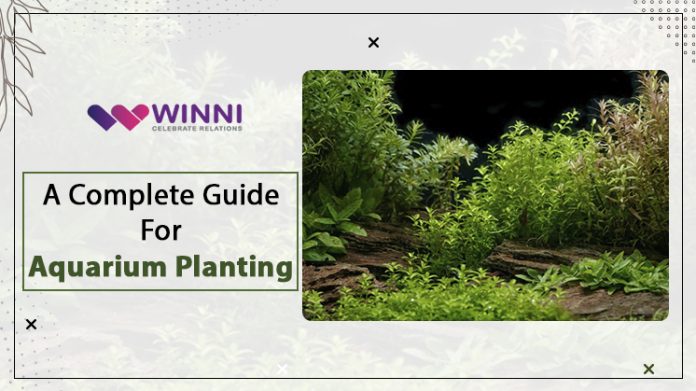To maintain proper growth, all plants require a combination of light, carbon dioxide (CO2) nutrition, and trace elements. Although this is basic knowledge, many people are unaware that plants require those elements in specific amounts. For example, if a plant has limitless light, CO2, nutrients, and most trace elements but lacks a certain trace element, it would not grow properly. The extra nutrient will be thrown away, possibly contributing to algal growth. Whether it’s indoor plants or aquarium planting in general, require a balance of all of their needs to remain healthy.
How To Set Up A Planted Aquarium?
A freshwater planted aquarium is a one-of-a-kind aquatic ecosystem that you may create in your own house. Aquariums with specially selected aquatic species, often known as planted or natural aquariums; are designed to accurately resemble attractive underwater environments seen in nature. So let’s have a dive into aquarium planting.
Lighting
Photosynthesis necessitates the presence of light. It provides energy to the plant for the chemical reaction. After all of the plant’s carbohydrate reserves has been used up, it will die without light. To maintain healthy growth, the right spectrum of light is also required. Plants like blue and red light, but full-spectrum lighting will make an aquarium look more appealing to visitors.
Sunlight is the ideal choice because it contains an entire spectrum of colours. However, a more experienced aquarium hobbyist (such as myself) would argue that this strategy has significant drawbacks. The indirect source is frequently either too weak or too short to allow the plant to operate properly. Sunlight can also create large temperature swings, which are harmful to both fish and plants. Another impact of sunlight is that it usually promotes the growth of algae.
As a result, artificial light is a better option for plants in aquariums. My best recommendation is full spectrum or broad-spectrum fluorescent lighting.
Carbon dioxide (Co2)
Co2 is another necessary component for photosynthesis; without it, photosynthesis would be impossible. During photosynthesis, dissolved CO2 is converted to glucose, providing the energy plants require to thrive. Because of fish respiration, most tanks will have some CO2, but it will not be enough to support lush plant growth.
A non-Co2 supplemented aquarium will typically have 1-3 ppm of CO2, and most plants will only thrive with 10-20 ppm. If you’re serious about having a planted aquarium, Co2 supplementation is required.
Vitamins and minerals (Macro Nutrients)
Nitrogen, potassium, and Phosphorus are the primary three elements required. These are required in huge numbers by the plant. This is also mandatory for online indoor plants or offline. If you add too many macronutrients to your aquarium planting, it can cause an unwelcome ‘algae bloom.’
Nitrogen in the form of ammonium (NH4+) is frequently present in significant quantities from fish waste. Most plants prefer ammonium, but some will use nitrate, the nitrification cycle’s final product (NO3-). Ammonium is the favoured nitrogen source since it requires less energy to use. Monitoring nitrates is a useful way to check for ammonium levels. If the nitrates are zero parts per million, you know that all nitrogen has been consumed. This could imply that some plants are nitrogen-deficient. It could also mean that the perfect balance has been attained, but this is highly unlikely.
Potassium (K+) is also commonly found in fish food. Potassium is very difficult to detect in water. There is usually adequate potassium if there are enough nitrates. Some fertilisers include more potassium in them and can be used to be safe.
Phosphorus (PO4) is another macronutrient found in fish food that is sufficient for plants. Although getting adequate Phosphorus is usually not a concern, too much of it might increase algae growth.
Element traces (Micro Nutrients)
Iron, copper, zinc, sulphur calcium, and magnesium are some of these nutrients. Excessive quantities of these can be detrimental to plants.
Iron may be present in tap water’s correct ionic state (Fe++), but it will quickly oxidise to a form that plants cannot use. Chelated iron combinations can be used to prevent this. The chelator stops iron from oxidising, making it easier for plants to absorb. The iron level should be less than 0.2 parts per million.
In most cases, tap water contains sulphur, calcium, and magnesium. Calcium and/or magnesium may be in low supply if the water has too little hardness (less than 3 degrees dGH). This can be corrected by adding tiny amounts of calcium and magnesium sulphate.
Other trace elements are only required in trace amounts and are usually found in fish food or specific trace element formulations. It’s worth noting that several of these elements are poisonous in anything other than trace concentrations. Therefore adding trace elements should be done with caution.




